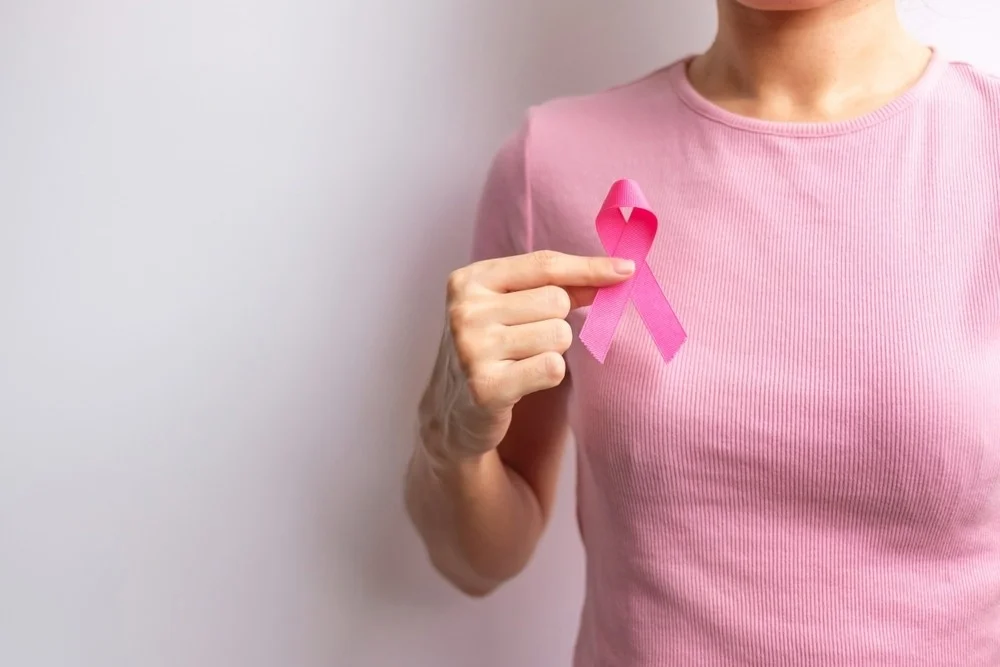
Breast cancer forms when the cell DNAs of the soft breast tissues mutate and multiplies erratically to form tumours. Even though this form of cancer can affect women of all ages, as per studies, it is more common to occur in women who are aged 50 or older. To cure this issue, you may need to undergo remedies like a combination of surgeries with chemo, and radiation therapy.
Breast Cancer
Showing all 4 results-
 Abraxane 100 MgPrice range: AUD 999.98 through AUD 2,879.93
Abraxane 100 MgPrice range: AUD 999.98 through AUD 2,879.93 -
 Arimee 1 MgPrice range: AUD 109.20 through AUD 280.80
Arimee 1 MgPrice range: AUD 109.20 through AUD 280.80 -
 Libetor 200 MgPrice range: AUD 37.44 through AUD 121.31
Libetor 200 MgPrice range: AUD 37.44 through AUD 121.31 -
 Piclib 125 MgPrice range: AUD 192.30 through AUD 515.37
Piclib 125 MgPrice range: AUD 192.30 through AUD 515.37
Breast cancer forms when the cell DNAs of the soft breast tissues mutate and multiplies erratically to form tumours. Even though this form of cancer can affect women of all ages, as per studies, it is more common to occur in women who are aged 50 or older. To cure this issue, you may need to undergo remedies like a combination of surgeries with chemo, and radiation therapy.
As per studies, it has been found that 80% of breast tumours are invasive, meaning they would spread from the breasts to other areas of the body.
Breast Cancer Types
To find out a tailored version of treatment for the patient, the doctor has to determine the cancer type. Even though to the common person it may seem only breast cancer, there are different types of the disorder, like-
1. Invasive Ductal Carcinoma
This cancer type usually starts in the milk ducts and spreads to other areas of the body. One study shows that it is the most common cancer type in the US.
2. Lobular Breast Cancer
It occurs in the milk ducts and spreads to the nearby breast tissues.
3. Inflammatory Breast Cancer
This form of cancer usually begins with a set of signs similar to rashes and swelling in the breasts.
Signs And Causes
Sometimes breast cancer is very indistinctive, while others may look very similar to other forms of cancer. Here is a list of some common signs which are:
- Changes in the size and contour of the breast tissues
- A mass of tissues and lump formation as small as the size of a pea
- Thickening of the muscle tissues surrounding the breasts
- Pain around the breast and milk ducts, which may last even after the menstrual cycle
- Scaly skin around the breast area
- Blood oozing out of the nipples or a form of milky discharge even after menopause.
With these issues, you need to head to the doctor’s right away for further diagnosis.
Causes
Health experts know that it is the DNA of the soft breast tissues that suddenly changes and mutates. Even though the cause is not exactly known to date, scientists believe that there is a form of mutation in the proteins of the DNA in the breast tissues, which causes the cells to begin reproducing abnormally high rate.
However, with this being said, scientists have done many studies on different breast cancer patients to date. Here are some generic reasons that they believe to be the cause of breast cancer.
Age being 55 years or more
Sex, where women are more likely to have breast cancer than men
Family history where the issue may occur in females who have a parent or a grandparent with the same problem
Genes, as scientists believe that up to 15% of breast cancer issues only occur in females during sudden gene mutations. Through elaborate studies, scientists have been able to get an idea of these genes, which are known as the BRCA1 and BRCA2 genes.
Smoking, where up to 30% of women with years or decades of tobacco addiction, may be linked with the disorder.
Alcohol use also counts as an addiction for reasons behind women having breast cancer.
Obese people can have up to 40% more chances of having breast cancer
Exposure to heavy radiation may make women who are linked with such jobs in the mining or radiation labs and experiments.
Diagnosis For Breast Cancer
The first job when you visit the doctors is to check your breasts externally for any sign of breast cancer, like rashes, oozing fluids from the breasts, and signs of pain in the patient.
However, of course, to diagnose and confirm the issue, scientists will take the help of lab tests. Here is a list of some of the usual diagnostic tests that are done for breast cancer:
- Ultrasound
- Mammography
- MRI
- Breast tissue biopsy
- Study of immunochemistry to test for signs of hormonal receptors
- Genetic tests that help to find traces of gene mutations
Breast Cancer Treatment
The primary treatment that most patients will need to go through to cure breast cancer is surgery, which is done in more than 80% of cases.
Some of the most common surgery types for breast cancer include:
- Mastectomy
- Lumpectomy
- Breast reconstruction surgery
Along with this, the providers and doctors may combine it with other treatments like:
- Chemotherapy
- Radiation therapy
- Immunotherapy
- Hormonal therapy
- Targeted therapy
Side Effects Of Breast Cancer Treatment
During the time of chemotherapy, patients usually have to deal with many side effects.
Some of the common issues are:
- Fatigue
- Nausea
- Vomiting
- Weight loss
- Constipation
- Diarrhoea
- Loss of appetite
- Changes in colour or texture of skin, with the skin getting darker in tone and flaky
Final Suggestions
Breast cancer may not be one of the most severe cancer types, with a higher survival rate. However, the family members and the patient have to be more proactive when it comes to curing breast cancer.
FAQs
1. Can you tell me the survival rate for breast cancer?
As per studies, it has been found that the female patient has a more than 85% survival rate before stage 4 breast cancer.
2. Is breast cancer curable?
Yes, studies and reviews from patients and doctors seem to indicate that it is one of the curable types of cancer.
3. What are the usual stages of breast cancer?
Stage zero, being the mild stage, to stage five, being the most severe, are the stages of breast cancer in the patient.
4. Can breast cancer occur after menopause?
Yes, as per studies, scientists believe that the menopause condition brings about sudden changes in hormones. Fluctuating hormonal levels are sometimes linked with mutations in the gene of the soft breast tissues.
5. How to manage stress with breast cancer?
Breast cancer patients have to deal with a lot of trauma as their breast size and shape may be altered heavily after or during the treatment. It may even be surgically removed, which causes stress and depression. You can consult with a mental health doctor for apathy and emotional treatment.

